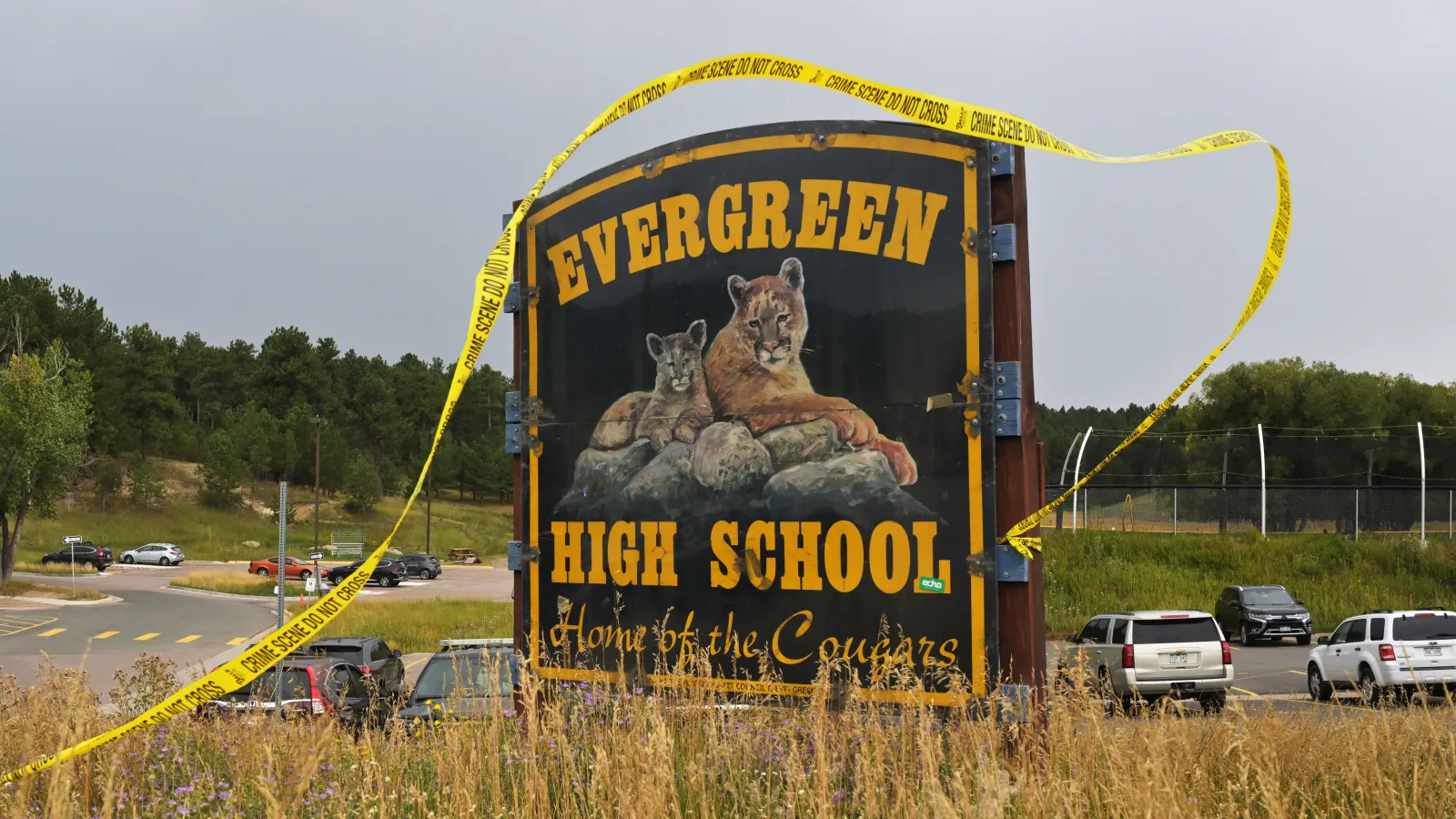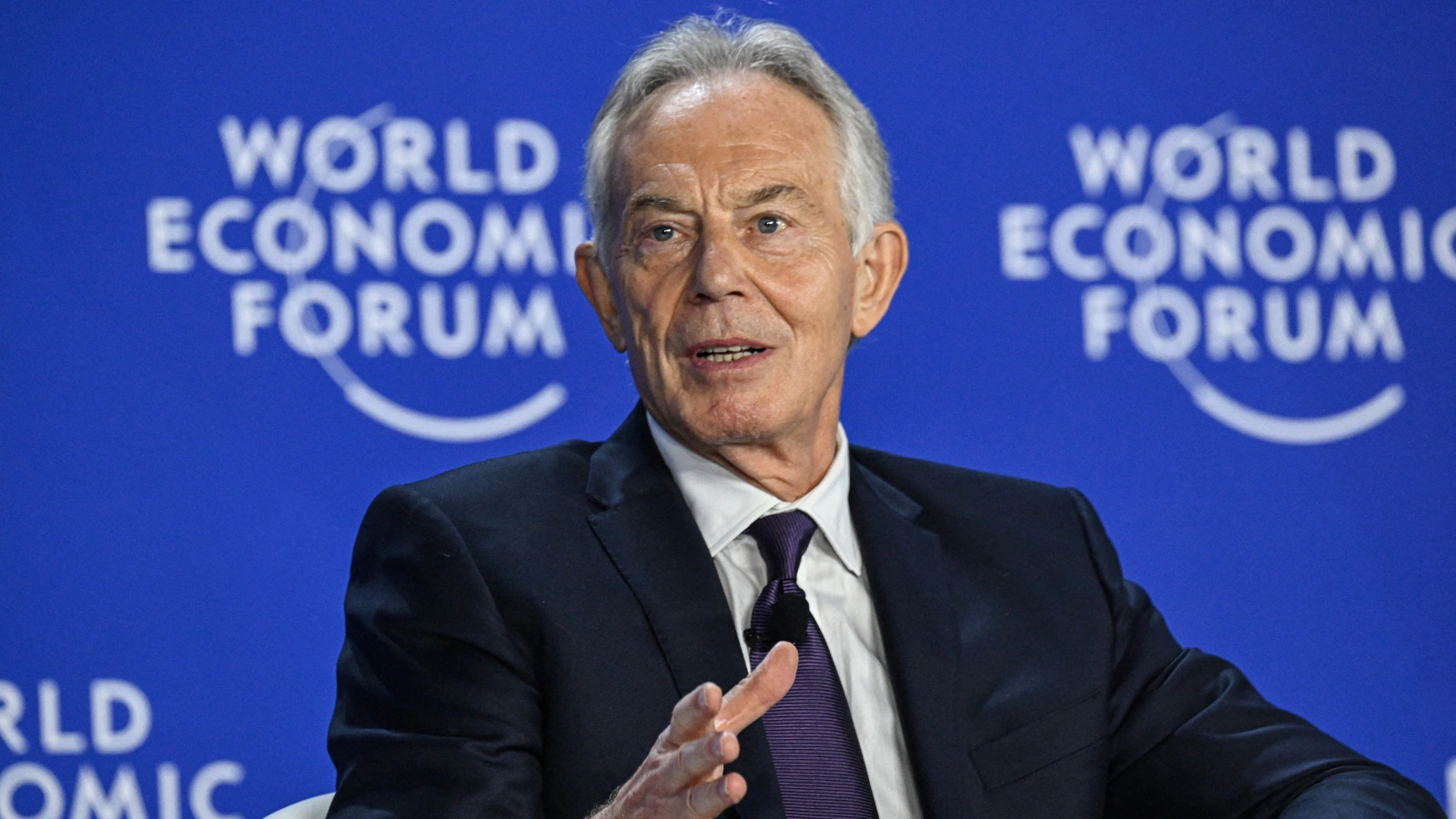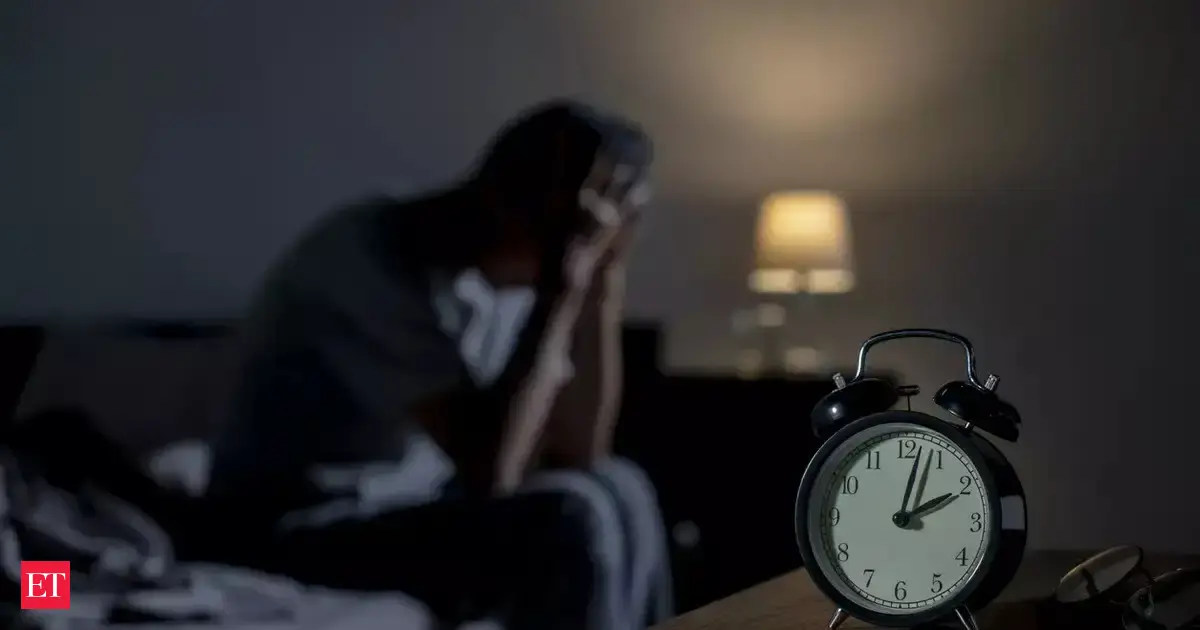As kids like the Evergreen High School shooter sink into violent online extremism, what can parents do?
By Jessica Seaman
Copyright denverpost

Social media accounts tied to the 16-year-old who shot two classmates at Evergreen High School were littered with references to white supremacy, antisemitism and other mass shootings — signs the teen had been radicalized online before his attack, experts say.
But some of the references were enigmatic enough that they might appear innocuous to people unfamiliar with their meaning, which is why those experts say parents and teachers need to become aware of a new subculture that is developing online and exposing children and teens to violent extremism.
“We feel like people don’t even know that this is going on,” said Oren Segal, the Anti-Defamation League’s senior vice president of counter-extremism and intelligence. “I need parents and educators to know this as much as law enforcement and tech companies. We need to understand there are these terrible places online, just a few swipes or clicks away.”
The Evergreen High attack reflects a convergence of school shootings and online extremism that has emerged in the U.S. in recent months — enough so that one researcher called this online radicalization the “new face” of school shootings.
“We’re getting to a place where school shooter-ism is actually developing momentum of its own,” said Jacob Ware, a research fellow at the Council on Foreign Relations. “Previously, school shootings were a model for people who were lonely, isolated and suicidal. Now it’s almost its own ideology.”
Experts in extremism and mental health said the ease of access to violent content online is why it’s so important for parents to monitor — and limit — their kids’ activity on social media and other websites. The warning signs that often precede such attacks haven’t changed even as school shootings and online extremism have merged, they said.
The Evergreen shooter’s online footprint showed he was exposed to violent content in the dark corners of the internet. But experts said popular social media platforms such as X and TikTok are also normalizing violence for young people and can be a gateway to more dangerous forums.
“It’s an entire ecosystem,” Segal said. “…It’s helpful to know there’s a problem, if you’re going to try to push back on that problem.”
The attack at Evergreen High is one of at least four shootings in the last nine months that were carried out by perpetrators who either revered mass violence or spent time in online spaces that glorify such behavior, according to experts in mass shootings and extremism.
Other similar shootings occurred at a Catholic church in Minnesota in August, at Antioch High School in Nashville, Tennessee, in January and at Abundant Life Christian School in Madison, Wisconsin, in December. (The Evergreen shooter had posted a selfie taken by the Madison attacker along with a photo of himself mimicking her pose.)
School shootings are rare, and those connected to online radicalization even more so, experts said. But it’s important to examine how extremism is influencing such violence to understand a shooter’s motivation and prevent attacks, said Jaclyn Schildkraut, executive director of the Regional Gun Violence Research Consortium at the Rockefeller Institute of Government.
“We all want to know why something happened, and it’s really difficult because it’s so many moving variables and pieces,” she said.
But preventing a shooting isn’t something that schools and parents can do by themselves, especially given the role social media and online violent content are playing, Ware said.
“The gun violence, the social media radicalization question — those are issues for political leaders to handle,” he said. “And, of course, they are refusing to handle them, and school children are paying the price.”
Representatives from Jeffco Public Schools declined to comment for this story.
‘Misanthrope — that has always been there’
In some ways, the student who opened fire on his classmates at Evergreen High School on Sept. 10, critically injuring 18-year-old Matthew Silverstone and an unidentified 14-year-old boy, is similar to others who have carried out school shootings.
His online activity showed he was interested in mass shootings and the people who perpetrated that violence, and that he had access to a gun — and by posting such content, he participated in one of the key warning signs that experts said often precede school shootings: leakage, or telling others what they plan to do.
The parents of the Evergreen attacker, who fatally shot himself as law enforcement closed in, have not spoken publicly about their son.
Making a plan and gathering weapons aren’t just warning signs, but indications that an attack is imminent, said Beverly Kingston, director and senior research associate with the Center for the Study and Prevention of Violence at the University of Colorado Boulder.
“I don’t think it’s necessarily different than the patterns that we are already seeing with school shooters,” she said. “A lot of times they seek out different groups, idealize past shooters — like the Columbine shooters and Parkland — and that’s one of the current warning signs.”
Even the Evergreen shooter’s involvement in nihilistic violent extremist networks — which call for violence as a way to destroy society — isn’t necessarily new, Ware said. Federal law enforcement authorities have now named the phenomenon, but the rejection of society has always been at play to an extent in school shootings, dating back to the 1999 Columbine High School attack, he said.
“Misanthrope — that has always been there,” Ware said.
But the shift happening now is in how nihilistic extremism and school shooter-ism are merging with incel extremism — a misogynistic view that the world is rigged against young men and that’s why they are unable to find romantic or sexual partners — and radicalizing young people, especially boys between the ages of 10 and 16, he said.
“The Colorado shooting exemplifies that,” Ware said.
Not only did the Evergreen shooter use white supremacist language and antisemitic symbols in his online posts, but he also showed familiarity with incel language, experts said.
In June, the 16-year-old shooter liked a comment that asked if “bro gonna become a Hero.” The term “hero,” specifically the “er” in the word, is an incel term that references the person who carried out the 2014 Isla Vista attack near the University of California’s Santa Barbara campus. The student in the Isla Vista attack had raged against women for rejecting him before killing six people and wounding more than a dozen more, the New York Times reported.
Despite the Evergreen shooter’s online footprint, his attack on his classmates was more likely driven by a desire to kill rather than a certain ideology or to spark political change, Ware said.
“I would be very surprised if he’s been fully indoctrinated into those ideologies,” he said.
School shootings always start with a grievance. This can be something real, such as a student being expelled, failing a test or bullying, Schildkraut said.
Or, she said, the grievance can be something more perceived, such as with the 2022 racist mass shooting at a supermarket in Buffalo, New York, where the attacker — a teenager who held white supremacist views — was angry and stuck at home during the pandemic, and found a community online that reinforced those feelings.
Experts say violence is glorified online
What has changed is that, due to social media and other online forums, geographic boundaries no longer dictate who can influence children down a pathway of violence, experts said.
“Before social media, those elements all existed, but you could protect young people through gatekeepers like parents,” Ware said. “…These individuals in these movements, they have figured out their own collection of websites and social media collectives.”
And in these online communities, slang, symbols or slogans are being used that adults may not understand.
“We’re not speaking the same language,” said Susan Payne, a national school safety expert and founder of Colorado’s Safe2Tell reporting system.
“How do we stay current and keep educated?” she said. “How do we make sure we are talking about those current ideologies and what that slang is?”
Adults, Payne said, are struggling to keep up with the language used online.
While these online communities espouse harmful views, they are less tied to those ideologies and more about normalizing violence and glorifying mass shooters, creating a space where young people can gain notoriety and a legacy if they carry out an attack, experts said.
“What’s different here is that we are seeing this kind of network that is not motivated by a hateful agenda or extremist ideology, but there are young kids carrying out the attacks who seem to be inspired by the violence by itself,” Segal said.
Violence isn’t just normalized in the deep, dark corners of the internet, but also on popular platforms, such as X, where many watched videos of conservative activist Charlie Kirk’s assassination, experts said.
“I wouldn’t be surprised if (the Evergreen shooter)… that they started with things that were more mainstream,” said Jessica Hawks, a child and adolescent psychologist at Children’s Hospital Colorado. “It tends to be a gateway where that type of exposure tends to start.”
Exposure to violent content on social media platforms negatively affects both children and adults’ mental health, creating a sense of fear, potential trauma and perpetuating the belief that schools and the world are not safe, according to mental health experts.
“For a subset of kids… it can increase the likelihood that they can develop increased sustainability of violent behavior themselves,” Hawks said.
One of the most protective factors for preventing violence is for a child or teen to have a trusted adult in their life and to feel like they belong in the community, including at school, according to violence and mental health experts.
Young people who are more isolated from their peers and family and don’t have a sense of belonging are more likely to “find a home” in the online communities that are encouraging them to engage in violence, CU’s Kingston said. “That becomes where they’re becoming bonded to,” she said.
Mental health experts do not recommend that youth have independent access to social media until they become adolescents because their brain development hasn’t reached a place where they can navigate such content without the support of adults, Hawks said.
Parents should still monitor their children’s social media activity even after they get their own accounts so that they can log in and see who kids are interacting with and what’s showing up on their feeds, she said. Kids don’t have to seek out violent content for it to show up on their social media feeds unprompted, Hawks said.
That’s why it’s important for parents to also set guidelines for overall screen use, such as not allowing phones in bedrooms at night, she said.
“Parents need to be regularly checking in with their kid to create an opportunity to learn what their kids are being exposed to in general,” she said, adding that those conversations are also important to have after a traumatic event, such as the Evergreen shooting and Kirk’s death.
“Our kids pretty consistently know about and are thinking about difficult topics more than parents would predict,” Hawks said. “It’s fully important to have these conversations and initiate them. Initiating these conversations does not cause harm.”
Knowing the signs
Those who study mass shootings said would-be attackers almost always tell people what they are going to do, and it’s important that those signs — even if they are being shared online — are reported to authorities either directly or through a reporting system like Safe2Tell so that a threat assessment can be done.
Teens who are being radicalized online are also likely to have changes in in-person behavior that can warn the adults in their lives that something is going on, and parents and educators need to be aware of when they need to get a child help, said Payne, the Safe2Tell founder.
In-person changes in behavior can include isolation, bursts of anger, how kids talk about issues and suicidal ideation, she said.
“We know that there are these warning signs,” said Schildkraut, of the Rockefeller Institute. “There is a lack of communication or training available about what this looks like for schools.”
The Evergreen shooter’s online presence showed he was active on websites that glorify deadly violence, and he posted on social media about getting a GoPro camera to potentially stream his attack. On the morning of the shooting, an X account tied to the teen posted a photo of a gun similar to the one used that day, according to the Anti-Defamation League.
The organization, which monitors online threats, reported social media accounts later tied to the Evergreen shooter to the FBI over the summer, and the federal agency began investigating in July. The FBI did not identify the student or take any action before the attack.
FBI Director Kash Patel said during a congressional hearing after the shooting that the agency needs help from social media platforms to monitor and report potential threats to law enforcement.
“Proactively, going out on to these social media platforms, which are so large, are our biggest impediment,” Patel said when questioned by Rep. Joe Neguse, D-Lafayette. “…While the FBI has so many people, and the police are great at doing it, there are just too many platforms to cover down on.”
Schildkraut called the FBI’s inability to find the shooter a “failure issue by law enforcement.”
“If people saw the posts and reported them, then they knew there was concerning behavior going on,” she said.
Both schools and parents should think about how kids are accessing dangerous content online and make sure their devices block websites that promote extremism and glorify violence, the ADL’s Segal said. They also need to know how to recognize the symbols and codes that extremists use so that they know when to intervene, he said.
Weeks before the shooting, the ADL sent a report to 16,000 superintendents nationwide about how children and teens are being exposed to violence and extremism online.
“I don’t think we want to turn our teachers and educators into a military force, but the more they know about these issues, maybe the more signs that they see,” Segal said.
Sign up to get crime news sent straight to your inbox each day.



